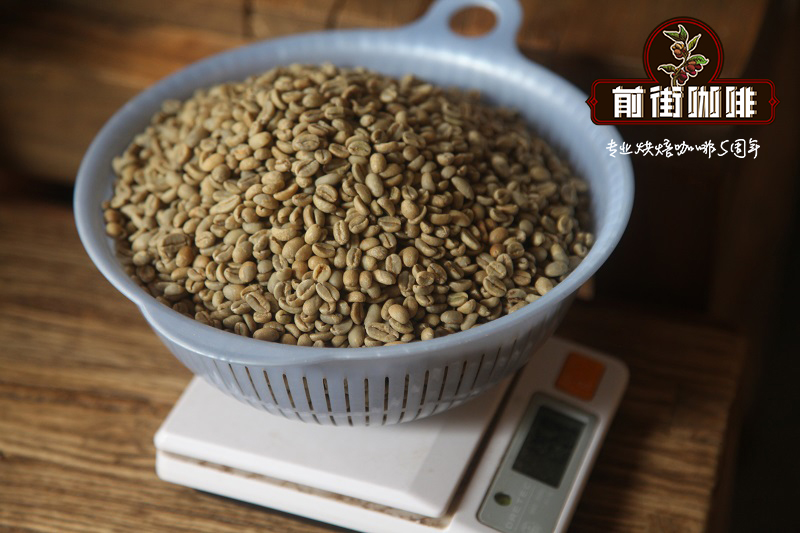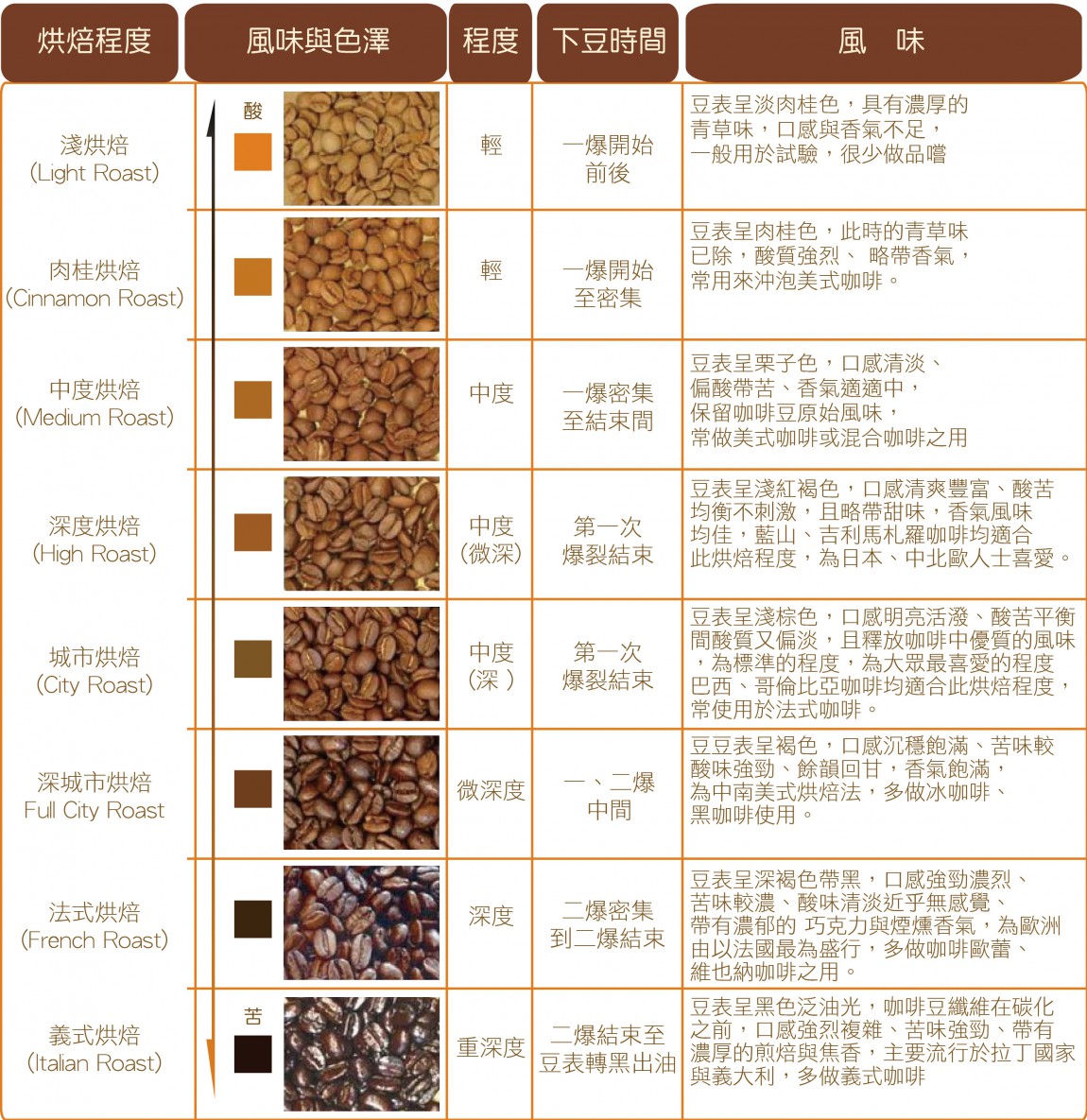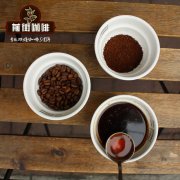Tips on how coffee beans are roasted
For professional baristas, please follow the coffee workshop (Wechat official account cafe_style)

Internal structure of raw bean
After harvesting and pre-processing, the coffee fruit will become our common green coffee raw bean. At this time, the raw bean still contains a lot of water, and it needs to go through the baking steps to evenly dry the internal water. Coffee raw beans (coffee seeds) are usually two in pairs, one side is arc-shaped, the other is flat, called Flat Bean, and the single seed shape is round, smaller is called Peaberry, and whether it is flat beans or round beans, the internal structure is made of woody fiber structure out of a space of different sizes, and what is covered in the space is the water content of raw beans.
In fact, the roasting of coffee is like frying steak, the better beef should not be overcooked to destroy its original flavor; the same is true of coffee, the higher the quality of coffee raw beans, should not be over-roasted, and to destroy its original essence.
Internal structure of ◎ raw bean
Whether it is flat beans or round beans, the internal structure is made of wood fiber structure of different sizes of space, and the space is covered by the water content of raw beans.
Substances extracted from the roasting of ◎ coffee raw beans
Coffee contains sucrose, caffeine, chlorogenic acid, fiber. Coffee is roasted mainly by extracting sucrose, which exists in both free water and structural water, making it independent by the baking process.
The key to the combination of ◎ sucrose and water-- water vapor
The sucrose and water needed to form syrup are stored in raw beans. What should be used to heat them so that they can be smoothly converted into syrup? The answer is: water vapor.
Relationship between ◎ Raw Bean and Bean Baking Machine
The moisture in raw beans is the source of water vapor when baking beans, the bean dryer is the tool to promote the generation of water vapor, and the design of the throttle and speed setting of the bean dryer are the key factors to promote these conditions.
The best reaction ratio of ◎ BRR
The temperature of the baked beans comes from the fire source of the bean dryer, and the heat energy of the fire source is taken from the amount of gas, and if the correct amount of gas is used to keep the boiler at the right temperature, the best reaction ratio of BRR (Best Reaction Ratio) can be obtained.
So what is the importance of baking? Among the factors that affect the taste of a cup of coffee
Raw beans account for 60%, baking for 30%, and extraction for 10%.
Good baking can maximize the personality of raw beans and minimize the occurrence of defective taste, while improper baking will completely destroy good beans. As the heating, time, and temperature control in the baking process is very difficult to grasp, baking technology is a very complex technology, so the importance of baking is more prominent.
What is baking? What is the definition of baking?
Generally speaking, the so-called coffee bean roasting (coffee roasting) refers to the heating of raw beans to promote a series of physical and chemical reactions inside and outside the coffee beans. When coffee beans are roasted, the volume of coffee beans expands and is 1/3 larger than that of raw beans. How to perfectly show the characteristics and flavor of coffee is the most important key, so how to bake is a technology, but also an art. Because of the different depth of roasting, the coffee beans have different personality and flavor.
And in this process, the formation of sour, bitter, sweet and other flavors of coffee, the formation of mellow and tone, the process of converting raw beans into dark brown beans. There are many ways to bake, and the baking depth of coffee beans
It can be divided into three types: shallow baking, medium baking and deep baking.
The consistent goal is a series of chemical reactions to transfer heat to coffee beans.
In the early days, people generally used iron pots to stir-fry coffee beans. after coffee was introduced into Europe, Europeans used Turkish iron pots to stir-fry beans, and then invented hand-operated rotary roasting, which could bake several pounds of beans at the same time, which was used by some coffee shops.
1860's: large roasters began to come out.
At the end of the 19th century, the advent of hot air roaster greatly improved the speed and efficiency of coffee roasting.
Makes it possible to produce more in large quantities.
20th century: the combination of roaster and electronic, has been improved to be more sophisticated, the emergence of fully automatic roaster
And has more advanced functions.
There are three major difficulties that coffee beans often face when roasting:
one. External environmental impact: air temperature, air pressure, humidity. Etc.
two. Coffee bean characteristics: water content, bean seed, bean quantity. Etc.
three. Types of baking machines: direct fire, semi-direct fire, hot air
Roasting degree of Coffee and timing of Bean drop
The sour ingredients in raw coffee beans are citric acid, malic acid, quinic acid, phosphoric acid and so on, but this is not the sour taste we feel when we drink coffee. The sour taste we taste mainly comes from the acid produced in the baking process.
The well-known roasting degree of coffee is mainly divided into the following four degrees:
1. Shallow baking 2. Medium baking 3. Deep baking
High acidity → low acidity (bitter)
Each degree can be subdivided into two, a total of 8 stages.

The sour taste of coffee can also be defined by technology, that is, the so-called PH value (pH value)!
The lightly roasted breakfast coffee → PH is between 4.5 and 4.7.
The medium and deep baked (Full City) → PH is about 55.5.
Deep baking (Dark Roast) → PH above 5.5
These factors have a direct and indirect relative relationship to the roasting of coffee beans, and if we deal with them carefully, we can make proper use of the various conditions of interest and achieve expectations. Therefore, it is not enough to know the roasting mechanism and know the roasting process. People use all kinds of coffee roasters on the market, and opinions vary from family to family on their effectiveness. Why?. It is caused by the fact that they do not know enough about the construction and operation principle of the baking mechanism they use.
The sour taste of coffee can also be defined by technology, that is, the so-called PH value (pH value)!
The lightly roasted breakfast coffee → PH is between 4.5 and 4.7.
The medium and deep baked (Full City) → PH is about 55.5.
Deep baking (Dark Roast) → PH above 5.5
Important Notice :
前街咖啡 FrontStreet Coffee has moved to new addredd:
FrontStreet Coffee Address: 315,Donghua East Road,GuangZhou
Tel:020 38364473
- Prev
How does coffee smell? Roasting curves differ for coffee, if the best roasting is found?
Professional barista communication, please pay attention to the aroma of coffee workshop (Weixin Official Accounts cafe_style). The aroma and taste of coffee roasting coffee are produced only after roasting. During the roasting process, the water content of green coffee beans is slowly released, the weight is reduced, the color is deepened, the volume is expanded, and the oil containing aroma is slowly released. In addition, raw beans originally contained large
- Next

Make yourself a cup of coffee, spend the day at home, and teach you how to brew it step by step
For professional baristas, please follow the coffee workshop (Wechat official account cafe_style) 1. Advice for beginners to enter the world of boutique coffee, the order of purchase is: coffee beans, bean grinders, coffee beans, hand pots, coffee beans, all kinds of filter cups, coffee beans, coffee machine finally, you don't have to buy. Good coffee beans are very important, so I have to say it many times. Just started knocking on the door.
Related
- Beginners will see the "Coffee pull flower" guide!
- What is the difference between ice blog purified milk and ordinary milk coffee?
- Why is the Philippines the largest producer of crops in Liberia?
- For coffee extraction, should the fine powder be retained?
- How does extracted espresso fill pressed powder? How much strength does it take to press the powder?
- How to make jasmine cold extract coffee? Is the jasmine + latte good?
- Will this little toy really make the coffee taste better? How does Lily Drip affect coffee extraction?
- Will the action of slapping the filter cup also affect coffee extraction?
- What's the difference between powder-to-water ratio and powder-to-liquid ratio?
- What is the Ethiopian local species? What does it have to do with Heirloom native species?

